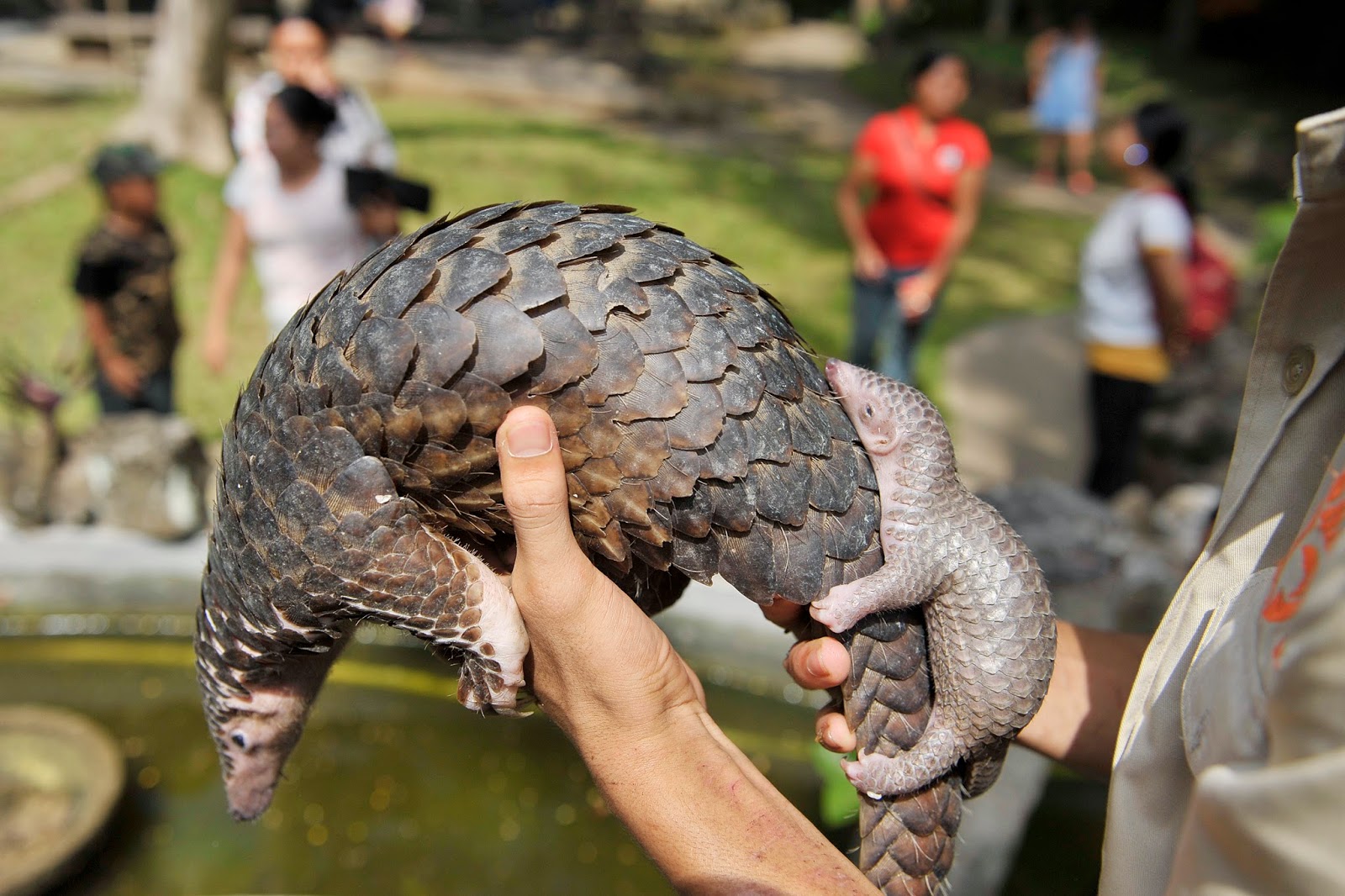The International Union for the Conservation of Nature's Species Survival Commission Pangolin Specialist Group at the Zoological Society of London published a report on 29 July 2013 warning that Pangolin's are now traded illegally more than any other Mammal, with over 1 million individuals taken from the wild in the last decade. Pangolins are eaten as a luxury foodstuff across East Asia, as well as being used in traditional medicine in places. There is an international ban on trading in Pangolins and Pangolin derived products, but the high value attached to the meat of the animals has led to this being widely flouted.
One of the worst affected species is the Malayan Pangolin (Manis javanica) which has had its conservation status revised to Critically Endangered under the terms of the International Union for the Conservation of Nature's Red List of Threatened Species. This species has traditionally been hunted as a food animal across its range (Southeast Asia from Myanmar to Borneo), but has suffered an estimated 80% decline in numbers in the last two decades, driven by hunting for export to China, and it is predicted that without action the population will drop a further 80% from current numbers over the next two decades.
A female Malayan Pangolin (Manis javanica) with her young at Bali Zoo. Berita Daerah.
The species formerly occupied much of southern and central Myanmar, but has apparently been wiped out in lowland areas due to a combination of expanding agriculture and hunting; there is no data on the species in highland areas of Myanmar, however animals have been seized from traders in China that are thought to have originated in Myanmar, suggesting that some animals still survive here.
The species was formerly found across Thailand, but again has apparently been driven out of most lowland areas by agriculture and hunting. The species is known to be surviving in Khao Yai National Park, where it has been detected by camera-trap experiments.
The species is thought to have formerly been widespread in Laos, at least in lowland areas, though it is now thought to have been largely wiped out by hunting, with some estimates suggesting a 99% drop in population in 30 years.
In Cambodia the Malayan Pangolin is known to have inhabited forested lowland areas in mountainous regions, but it is again reported to have largely disappeared.
The species historically occupied much of southern and central Vietnam, where again numbers have declined greatly due to hunting. There are thought to still be populations in in Dak Nong, Kon Tum, Quang Binh and Gia Lai provinces, and in Cát Tiên, U Minh Thuong and U Minh Hạ National Parks (and has been detected by camera trap in the last of these).
Malayan Pangolins are still found in Peninsula Malaysia, though their numbers have declined due to hunting. However the species seems to have survived the clearance of Diptocarp forests to some extent, successfully colonizing Rubber and Palm Oil plantations as well as gardens. It is known to be present in the Pasoh Forest Reserve, and has been detected by camera trap in the Kenyir Wildlife Corridor; however as in other areas populations are though to be under heavy pressure from hunting here.
The species is known to still exist in the wild on the island of Singapore, as well as on neighbouring Pulau Tekong, and possibly also Pulau Ubin.
On Borneo the species was formerly common and widespread, but is now rarely sighted. It is thought to be present in the Kebun Cina Forest Reserve in Sabah, and was reported in parts of Sarawak as recently as 2005, though it is apparently no longer present in the states peat forests. It may still be present in the peat forests of Kalimantan, and a small number of live animals were rescued from hunters in Brunei in 2013, suggesting that the species may also be present there.
The Pangolins formerly occupied the Indonesian islands of Sumatra and Java in some numbers, and are thought to still be present, but under severe threat from poaching. Over the period 2000-2013 three hauls of poached Pangolins weighing in excess of 10 tonnes (11, 14 and 17 tonnes respectively) were seized in Indonesia, each comprising thousands of animals, and it is thought that this only represents a fraction of the total trade.
The species was formerly identified as being present in the Philippines, but these populations are now considered to belong to a separate species, the Philippine Pangolin (Manis culionensis).
The former range of the Malayan Pangolin (Manis javanica). International Union for the Conservation of Nature's Red List of Threatened Species.
See also...
 Mapping deforestation on Borneo.
Mapping deforestation on Borneo.Industrial scale timber extraction began on Borneo in the 1970s and during the period 1980 to 2000 more timber was harvested from Borneo than from Africa and the Amazon Basin combined. In addition much forest has been cleared to make way for monoculture plantations, for the palm oil, rubber and timber industries, as well as being burned in forest fires. For this reason the island is...
 Chinese Pangolin classified as Critically Endangered.
Chinese Pangolin classified as Critically Endangered.The International Union for the Conservation of Nature's Species Survival Commission Pangolin Specialist Group at the Zoological Society of London published...
 Sangihe Dwarf-kingfisher classified as Critically Endangered.
Sangihe Dwarf-kingfisher classified as Critically Endangered.Birdlife International published an assessment of the conservation status of 350 newly described Bird Species for the International Union for the Conservation of Nature's Red List of Threatened Species on 24 July 2014, the first such assessment by the organization. 25% of the species described are considered to be...
Follow Sciency Thoughts on Facebook.


